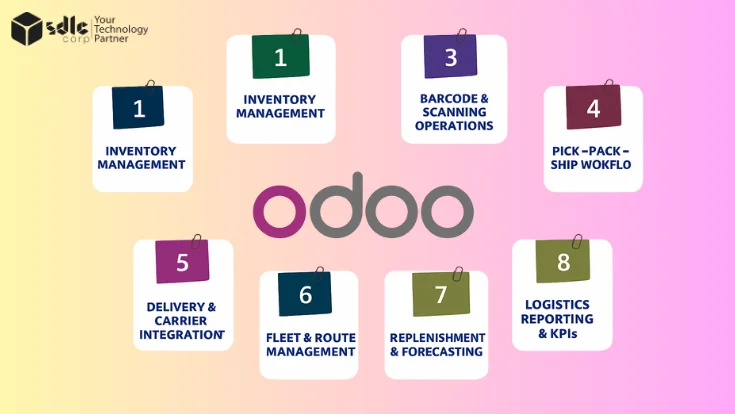Introduction
Building a scalable cryptocurrency exchange platform isn’t just about getting your exchange up and running it’s about creating a system that can handle thousands, if not millions, of transactions seamlessly as your user base grows. With the crypto industry booming and more traders entering the market daily, scalability is a crucial factor that can make or break the success of your exchange.
Let’s break down how you can build a scalable cryptocurrency exchange that can handle high trading volumes, maintain security, and deliver a smooth user experience.
Build Your Secure Crypto Exchange Today!
A Cryptocurrency Exchange Development Company specializes in building secure, scalable platforms for trading digital assets.

1. Choose the Right Architecture: Monolithic vs. Microservices
One of the first decisions you’ll need to make is selecting the right architecture for your platform. Scalability starts with how you build the foundation.
Monolithic Architecture
- Pros: Easier to implement initially, simpler to manage for small teams.
- Cons: As your platform grows, monolithic systems become harder to scale. Any updates or changes require modifying the entire system, leading to downtime and potential issues with performance.
Microservices Architecture
- Pros: Highly scalable, as different services (like trading, user management, wallet services) are separated. Each service can be scaled independently depending on demand. It also enables faster development cycles and more flexibility for updates.
- Cons: More complex to set up and manage initially, requiring more resources and expertise.
Architecture Type | Pros | Cons |
Monolithic | Easier setup, simpler management | Hard to scale, difficult to update |
Microservices | Highly scalable, flexible, faster iterations | More complex setup, requires expertise |
Why Microservices Are the Best Bet for Scalability: If you’re aiming to handle a growing number of users and trading volume, microservices allow each component of your exchange to scale independently, improving both performance and reliability.
2. Implement High-Performance Matching Engine
At the heart of any cryptocurrency exchange is the matching engine. This is the core of your platform that processes buy and sell orders, matching them efficiently. To scale your exchange, your matching engine must handle thousands of transactions per second (TPS).
Key Considerations for a Scalable Matching Engine:
- Low Latency: Ensure that your matching engine can process trades in milliseconds. In high-frequency trading environments, every millisecond matters.
- Concurrency Management: Support for handling multiple trades simultaneously without conflicts.
- Fault Tolerance: Ensure the engine can handle failures gracefully without affecting the user experience.
Matching Engine Feature | Why It Matters |
Low Latency | Ensures fast order execution, critical for high-frequency traders and maintaining a competitive edge. |
Concurrency Management | Supports multiple trades at the same time, increasing efficiency and user satisfaction. |
Fault Tolerance | Allows the engine to recover from failures without disrupting trading, maintaining platform stability. |
3. Leverage Cloud Infrastructure
Using the cloud is essential for building a scalable exchange. The flexibility, performance, and availability offered by cloud providers enable your platform to grow dynamically with your user base.
Benefits of Cloud Infrastructure:
- Scalability on Demand: Automatically scale your resources as trading volume increases, ensuring your platform doesn’t slow down during high traffic.
- High Availability: Cloud platforms like AWS, Google Cloud, or Azure offer redundancy, meaning your exchange can remain operational even during server failures.
- Global Reach: Cloud infrastructure allows you to host your platform in multiple regions, minimizing latency and providing a seamless experience for users around the world.
Tip: Serverless architecture and auto-scaling groups can dynamically adjust computing power based on the platform’s load, ensuring cost-effective scaling.
4. Build a Secure Wallet System
Wallets are a critical component of any exchange. Ensuring the security of user funds while maintaining the ability to handle a large number of transactions is key to scalability.
Hot vs. Cold Wallets:
- Hot Wallets: Used for day-to-day transactions. They are online and provide fast access to funds but are more vulnerable to hacks.
- Cold Wallets: Offline storage used for long-term holdings. They are more secure but less accessible.
To ensure both security and scalability, implement a hybrid wallet system:
- Store a small portion of assets in hot wallets for immediate trades.
- Keep the majority in cold wallets for security, minimizing the risk of large-scale theft.
Wallet Type | Usage | Security | Scalability |
Hot Wallet | Day-to-day transactions | Vulnerable to hacks | Fast transactions, high demand |
Cold Wallet | Long-term storage | Highly secure, offline | Limited to large transactions |
Hybrid Model | Balances accessibility and security | Combines fast access and safety | Ideal for scalable exchanges |
Start Your Centralized Exchange Today!
Develop a secure, scalable centralized crypto exchange with advanced trading features, liquidity solutions, and user-friendly UI.

5. Ensure Compliance and Security
Regulatory compliance is non-negotiable for any exchange that plans to scale globally. Different regions have varying rules around cryptocurrency trading, including Know Your Customer (KYC) and Anti-Money Laundering (AML) requirements.
Key Security Measures:
- KYC/AML: Ensure that your platform complies with international KYC and AML standards. This includes verifying user identities, monitoring transactions, and reporting suspicious activity.
- Two-Factor Authentication (2FA): Implement 2FA for all user accounts to prevent unauthorized access.
- Encryption: Use end-to-end encryption for sensitive data and communications between users and the platform.
- DDoS Protection: Protect your platform from distributed denial-of-service (DDoS) attacks by using cloud-based DDoS protection services.
Security Feature | Purpose |
KYC/AML | Prevents fraud and ensures legal compliance |
2FA | Secures user accounts from unauthorized access |
Encryption | Protects sensitive user data |
DDoS Protection | Shields the platform from cyberattacks |
6. Choose the Right Tech Stack
The technology stack you choose will directly impact the scalability and performance of your exchange. Opt for technologies that are proven to handle large-scale applications.
Recommended Tech Stack:
- Backend: Use Node.js or Go for a fast, scalable backend. These technologies support high concurrency and are ideal for real-time applications.
- Database: Implement a NoSQL database like MongoDB for flexibility and high performance, especially for handling user data and transaction histories.
- Blockchain Integration: Depending on the assets supported, integrate with major blockchains using API services or custom-built modules to ensure reliable transaction processing.
7. Optimize for High Availability
Your exchange must be available 24/7, with zero downtime, especially during peak trading hours. Implement high-availability strategies to ensure your platform can handle traffic spikes without failure.
Key Strategies:
- Load Balancers: Distribute traffic across multiple servers to avoid bottlenecks.
- Database Replication: Use master-slave replication to ensure real-time backup and recovery of critical data.
- Failover Mechanisms: Implement automatic failover systems that switch to backup servers or regions in case of failure.
8. Implement Real-Time Data Analytics
Scalability isn’t just about handling a large number of users but also ensuring that the platform can process real-time data, including price movements, order books, and trade histories. This data must be displayed accurately and quickly for traders to make informed decisions.
Key Tools:
- Use tools like Apache Kafka for real-time data streaming.
- Implement Redis for caching frequently accessed data to reduce database load and improve response times.
9. Monitor and Maintain
As your exchange grows, it’s critical to have real-time monitoring and automated maintenance systems in place to ensure consistent performance and uptime.
Monitoring Tools:
- Use Prometheus and Grafana to monitor your platform’s health, including server load, transaction volume, and error rates.
- Implement automated scaling solutions to dynamically adjust resources based on traffic demands.
Secure Cryptocurrency Trading Solutions
Custom cryptocurrency exchange software development services offering secure, scalable platforms for seamless digital asset trading and management.

Conclusion: Build for the Future
Building a scalable cryptocurrency exchange is no small feat, but with the right approach, you can create a platform that not only handles today’s demands but is ready for tomorrow’s challenges. From choosing the right architecture and leveraging cloud infrastructure to implementing security best practices and maintaining real-time performance, every decision you make should be geared towards growth and stability.
By focusing on scalability from day one, you ensure that your exchange can expand with the market, handle high trading volumes, and provide a seamless, secure experience for all users.
How SDLC CORP Can Help with Cryptocurrency Exchange Development?
SDLC Corp offers comprehensive solutions for P2P crypto exchange development by leveraging our expertise in building secure and scalable platforms. Our cryptocurrency exchange development services provide clients with tailor-made cryptocurrency exchange scripts, ensuring rapid deployment and customization. We also specialize in white label crypto exchange software, enabling businesses to launch their exchanges quickly with all essential features.
For those seeking a centralized exchange script, we provide robust, user-friendly solutions. Our white label crypto exchange development services allow for personalized branding while ensuring full compliance with security standards.
As a DeFi exchange development company, we are proficient in developing decentralized platforms with advanced features, ensuring seamless user experiences. Additionally, we support crypto derivatives exchange development and are a leading decentralized exchange development company, offering cutting-edge tools to facilitate secure and transparent trading.
Our expertise extends to automated trading tools, with our crypto arbitrage trading bot development company services providing highly efficient bots to capitalize on price differences across exchanges. We aim to empower businesses with state-of-the-art P2P crypto exchange software, catering to the growing demand for decentralized financial systems.

















